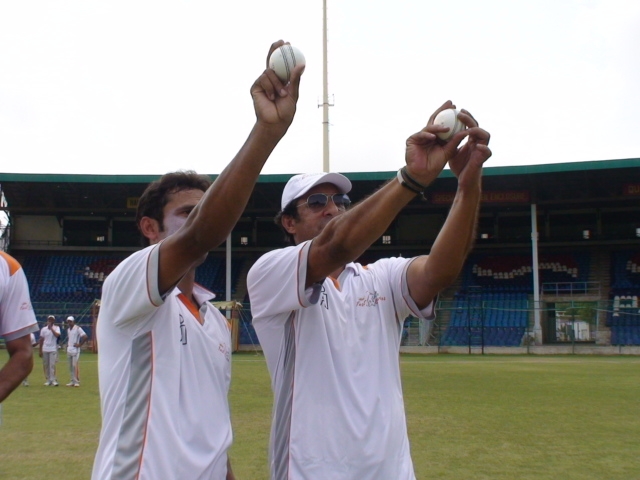It's one of the hardest and most valuable skills in sport – talent spotting – especially when we are talking about players who are at the infancy of their cricketing careers but managing the process correctly, or at the very least practically, will maximise the throughput of quality players.
By Nasser Khan (17th February, 2014)
It's a strange experience watching under-19s cricket, watching players who are clearly not the finished article but also knowingly aware that there have been individuals who have been introduced to senior level cricket, with success, at this very age. It's possible to judge the quality of a player once playing international cricket, or even one who has performed consistently in domestic cricket for a number of years, but how should starlets be assessed?
There are youngsters who stand out in under-19s cricket, – Sami Aslam, Karamat Ali and Sanju Samson are three who have been earmarked as having big a future - but for each to develop from an under-19 prospect to an established international player will require careful management, focusing on the individual strengths and deficiencies at a very fragile stage of their careers in which the players themselves don't fully understand their own games, let alone those seeking to influence them. Their malleability can make the process more difficult, not less.
Individual responsibility is also of course important. One of the constants for all top players is their dedication to hard work, but hard work shouldn’t push out the individuality that gives a player the edge. All top players work hard, but not all hard workers are top players.
Both Mohammad Akram and Misbah-ul-Haq have mentioned in recent interviews that Pakistan are late in identifying high-potential players, stating that the under-16s should be the starting point, not the under-19s. This is commonplace in football and a lot of other sports, as top clubs of course have links to the grass-roots football in which they seek to identify talent at very young age. This strategy has not been completely successful, with most of the top clubs still purchasing talent rather than long-term nurturing. The sporting talent identification process is very much an art, emphasising the importance of having suitably qualified individuals in place.
Nasser Hussain once talked about Mohammad Amir and asked the question, and I paraphrase, “Where’s your 17-year-old? This one's about to open the bowling in the final of the World T20 at Lords.” It's often forgotten that Mohammad Amir worked under Sabih Azhar, one of Pakistan's best coaches for working with young talent, and honed his skills for a number of years before playing for the Pakistan team. It is, therefore, true that for every player who takes to international cricket like Amir did, there is an Usman Khan Shinwari, one who is thrown in under-cooked.
Mention of Amir of course cannot be made without his misdemeanour’s, and his mistakes emphasise the importance of protecting youngsters, or at the very least educating them on the consequences of their actions – international sport is not a playground, but a job with stakeholders. That knowledge doesn't come through the ICC-approved courses but through guiding hands.
The ideal way forward is via the scouting and support structures from grass roots to international level. Pakistani domestic cricket certainly needs strengthening at the grass-roots, including the improvement of pay, rewards, equipment and facilities. These are long-term projects, something the short-termists at the PCB haven't historically had the will nor the wherewithal to implement. If we are to stick within the parameters of practicality and what can be achieved with little minimal infrastructure, the Imran Khan model seems to be the only option available. It's a system that harks back a couple of decades; identify talent, nurture it and provide appropriate support. What is the ideal age at which this process should begin? As with most of the process, there is no definite age – it depends on the individual player. The key to the success of this process is the need for coaches, scouts and schemes which are able to identify potential, to not exhibit nepotism or any bias and have the skills to carry out their assigned task. There are many hard working individuals in Pakistani cricket of course, those who dedicate their lives with little personal reward to enhance the sport in the country and those individuals should be given greater scope in the PCB. Let the cronies keep their lucrative posts and self-interests, but there is enough room in the organisation for those who are actively involved in the grass-roots of cricket to quietly work away.
Once players have been identified, they should be given access to academies, no matter what the state of the local facilities may be, giving them the opportunity to work with coaches who understand their individual requirements, not just confined to technical but the mental aspects of the game.
It's one of the hardest and most valuable skills in sport – talent spotting – especially when we are talking about players who are at the infancy of their cricketing careers but managing the process correctly, or at the very least practically, will maximise the throughput of quality players.











